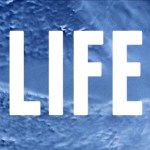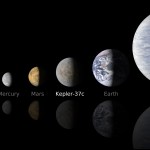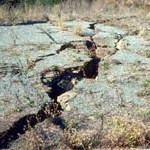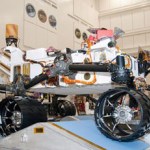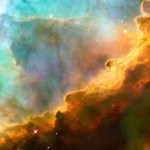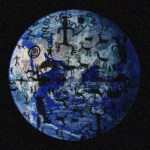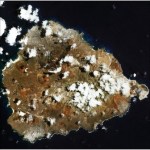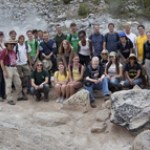astrobiology
Last year EANA, the European Astrobiology Network Association put up a series of 18 introductory astrobiology video lectures constituting the AstroBiology Course Lectures:
Introduction to Astrobiology
Formation of the Solar System
Origins of Life: current theories
Comets and the origin of life
Basic prebiotic chemistry
Structures and evolution of proteins
Most simple (early) life forms
On the bias of metabolism versus genetics first
Extremophilic microorganisms
Desiccation and radiation resistance of extremophiles
Search for Life on Mars
Biosignatures of microbial life (early…
Discovery, by nature, has a ripple effect. When one thing is found to be plausible, testable, or true, a suite of potential other truths and plausibilities tend to follow suit. This is the nature of inductive reasoning, the foundation of the scientific method, and the reason why science–as a human project–is generational. We discover something unexpected, and we celebrate twofold, threefold, and morefold, because its nuances and implications can ebb outwards, often lending hope to scientists working in entirely different fields.
Take the recent discovery of life in Lake Vostok, for instance:…
"You can spend too much time wondering which of identical twins is the more alike." -Robert Brault
You've of course heard by now the news that Kepler, the most successful and prolific planet-finding mission of all time, has probably reached the end of its useful lifespan.
Image credit: NASA / Kepler Mission / Wendy Stenzel.
With nearly 3,000 planet candidates under its belt, including many approximately Earth-sized (and some even smaller), and many within their parent star's habitable zone, we now know that, at least planet-wise, we're not alone in our galaxy.
Image credit: NASA Ames /…
Over the next 10 years, what research done on bodies within our Solar System (measurements and theory) will be most important for informing our search for life beyond the Earth?
This is the current topic posed as the Single Question on the Future of Astrobiology at the ongoing NASA Astrobiology Institute Roadmap online exercise.
If you want to opine, The Forum is Open
The final session in the online discussion of the NASA Astrobiology Roadmap is today from 4-5 pm eastern.
Go to Astrobiology Future to sign in to the live web chat. Questions and comments will be taken both from call-ins and from written questions.
The online discussion will be moderated by Dr Francis McCubbin from UNM, Dr Sean Raymond from Laboratoire d'Astrophysique de Bordeaux, and yours truly...
The live session will, as with the other Roadmap sessions, be followed by a week long opportunity to input questions, ideas and topics for discussion at The Astrobiology Future Forum.
The four…
Astrobiology Future
The NASA online discussion session on the Astrobiology Roadmap continues this week.
This morning there was a web chat on "Early Evolution of Life and the Biosphere", which is being followed up by an ongoing online discussion on the questions posed and soliciting ideas for priorities in research direction.
The questions being discussed are:
How has the exponential growth in our discovery and understanding of exoplanets impacted the kinds of questions and information we extract from the early Earth record?
Are there problems you think are vital to understanding the early…
The future of Astrobiology research within NASA is being set now.
Next week there are further opportunities for community input.
The online discussion for Solar System Exploration wraps up today!
If you are an active researcher, a student planning on getting into astrobiology, or an interested member of the community, this is your chance to provide input on the direction of research.
This is your future.
Be there, or we will choose for you.
The NASA Astrobiology Roadmap exercise is under way, and will continue over the next two weeks.
NASA Astrobiology
The next two topics will kick off…
It is critically important that the community participate in the current ongoing discussion for the NASA roadmaps. Particularly if you are an early career researcher. This is your opportunity to make the case for what you think is interesting and important.
NASA Astrobiology
NASA is going through a series of Roadmap exercises by the different directorates, trying to set medium and long term policy for science goals, technology development and capabilities.
The NASA Astrobiology Program is doing a rolling series of Roadmap input sessions for four themes for Astrobiology.
Each theme kicks…
Visiting Astrobiology Chair in DC: research and engagement.
Applications and nominations are open for the Baruch S. Blumberg NASA/Library of Congress Chair in Astrobiology.
"Established in the Fall of 2011, the Blumberg Astrobiology Chair is a distinguished senior position at the Library’s Kluge Center.
The incumbent conducts research at the intersection between the science of astrobiology and its humanistic aspects, particularly its societal implications, using the collections and services of the Library. The incumbent is expected to be in residence at the Kluge Center for a period of up to…
By Dr. Friedemann Freund; Carl Sagan Center for the Study of Life in the Universe, SETI Institute, and Gail Jacobs
Friedemann Freund doesn't shrink from taking on the really big problems. His research has elucidated such important phenomena as the fact that rocks under stress behave like batteries that can produce currents deep within the crust of the Earth. These are not piddling electron flows, either - the currents could be as large as millions of amperes, sufficient to be measured above ground, and perhaps even from orbit. Understanding and exploiting this phenomenon could lead to a…
Europa is a moon of Jupiter, the smallest of the four Jovian moons discovered by Galileo in 1610. Juipter has 63 objects circling it that are called moons, though only eight of them are "regular" in their orbit and other characteristics. The rest are bits and pieces of clumped up matter that were probably captured by Jupiter's big-ass gravitational field, and have irregular orbits, i.e., they go the wrong-way around the planet, or are not in the solar plane, etc.
Europa is almost as big as the Earth's moon, probably has an iron core, and is otherwise made of silica. There is an atmosphere…
Remembering Dr. Emma Bakes
An exceptional person, Dr. Emma Bakes passed away on February 28, 2011. She accomplished a great deal and touched many people in an unfortunately short time. Her accomplishments span oceans and included the physical sciences, medicine, fashion, martial arts, and parenthood to name just a few. To honor and remember her, the SETI Institute and NASA's Kepler Mission Team invite you to read the following essay she wrote just a few months ago. It is an essay that reflects her life and her legacy...
Donald Mendoza, NASA Ames, and the SETI Institute
The Shore of the Cosmic…
I've been strangely fascinated by the "arsenic-eating" and maybe "arsenic-utilizing' bacteria report from NASA researchers and the so-called "backlash" ("arsenic-gate") in the blogosphere. Many others have posted on this topic. What I've found most interesting is that there seem to be several parallel and barely intersecting universes: 1) the scientific literature, 2) the traditional media, and 3) the blogosphere.
Universe 1: Wolfe-Simon has published for several years about the potential for unique
arsenic metabolism (among other topics), and this is the next paper in her series of…
From Earth to the Universe was a brilliant outreach project for the 2009 International Year of Astronomy, displaying online, and in real life, some of the best astronomical images around.
Now we have the Year of the Solar System coming up, who knew, and more and better images are needed!
From Earth to the Solar System
FETTSS will be an online collection of images that can be freely downloaded and exhibited by organizations worldwide in whatever manner they choose.
In celebration of NASA's Year of the Solar System, the images will showcase the excitement and discoveries of planetary…
By Dr. Rosalba Bonaccorsi
Environmental Scientist at the Carl Sagan Center for the Study of Life in the Universe, SETI Institute, and Gail Jacobs
Rosalba, what first sparked your interest in science?
I've always had big dreams -- even as a young girl. As soon as I started to walk, I took an interest in conducting experiments with whatever was available around such as household plants and various chemical compounds. I'm lucky I didn't end up poisoned or otherwise hurt! I remember dismantling alarm clocks. I was so curious!
As a young girl, I was in poor health and as a result spent a lot of…
By Dr. Paul EstradaPlanetary physicist at the Carl Sagan Center for the Study of Life in the Universe, SETI Institute, and Gail Jacobs
If planets are a dime a dozen, moons are less than a penny each. There are at least 139 moons just within our own solar system. Most of these are the property of the gas giant planets beyond Mars. More than just a nice accompaniment to planets, moons may have habitats in which liquid water could ebb and flow - and possibly be a suitable home for life. Planetary physicist Dr. Paul Estrada investigates how moons around gas giants are formed -- an important…
Let's define alien.
Definition number one: unfamiliar. By that description alone, a good 99% of life on this planet is alien. Breathing water, living nestled in thermal vents, stalking prey on the veldt, growing out of the Earth and eating sunlight, without eyes, without legs, with extra legs, color-blind, carapaced, marsupial, with exoskeletons, with jelly for brains, microbial, in a test tube, growing from spores. Not to mention the extremophiles, those nutty organisms that thrive in hellish environments like boiling acid, liquid asphalt, radioactive waste, and under extreme pressure.
I'…
Life transforms environments, creating ecosystems where there was once only rocks. The evolution of photosynthetic bacteria billions of years ago created the atmosphere we have today, paving the way for the evolution of larger, oxygen-breathing organisms. We humans obviously transform our environment in countless ways, but can we also engineer barren environments to be hospitable to life? Can we create new living, self-sustaining ecosystems in hostile places? Can we turn lifeless planets into second Earths through the clever introduction of life forms?
Terraforming is the (currently…
Every summer, the SETI Institute hosts 15-20 college students from around the country as part of its Astrobiology Research Experience for Undergraduates (REU) internship program. The program, which is funded by the National Science Foundation and the NASA Astrobiology Institute, pairs each student with a research mentor at the SETI Institute. At the end of the 10-week internship, each student presents a talk and written report on their research project, and many students go on to present their work at professional conferences during the following academic year.
This year, our 19 REU interns…
